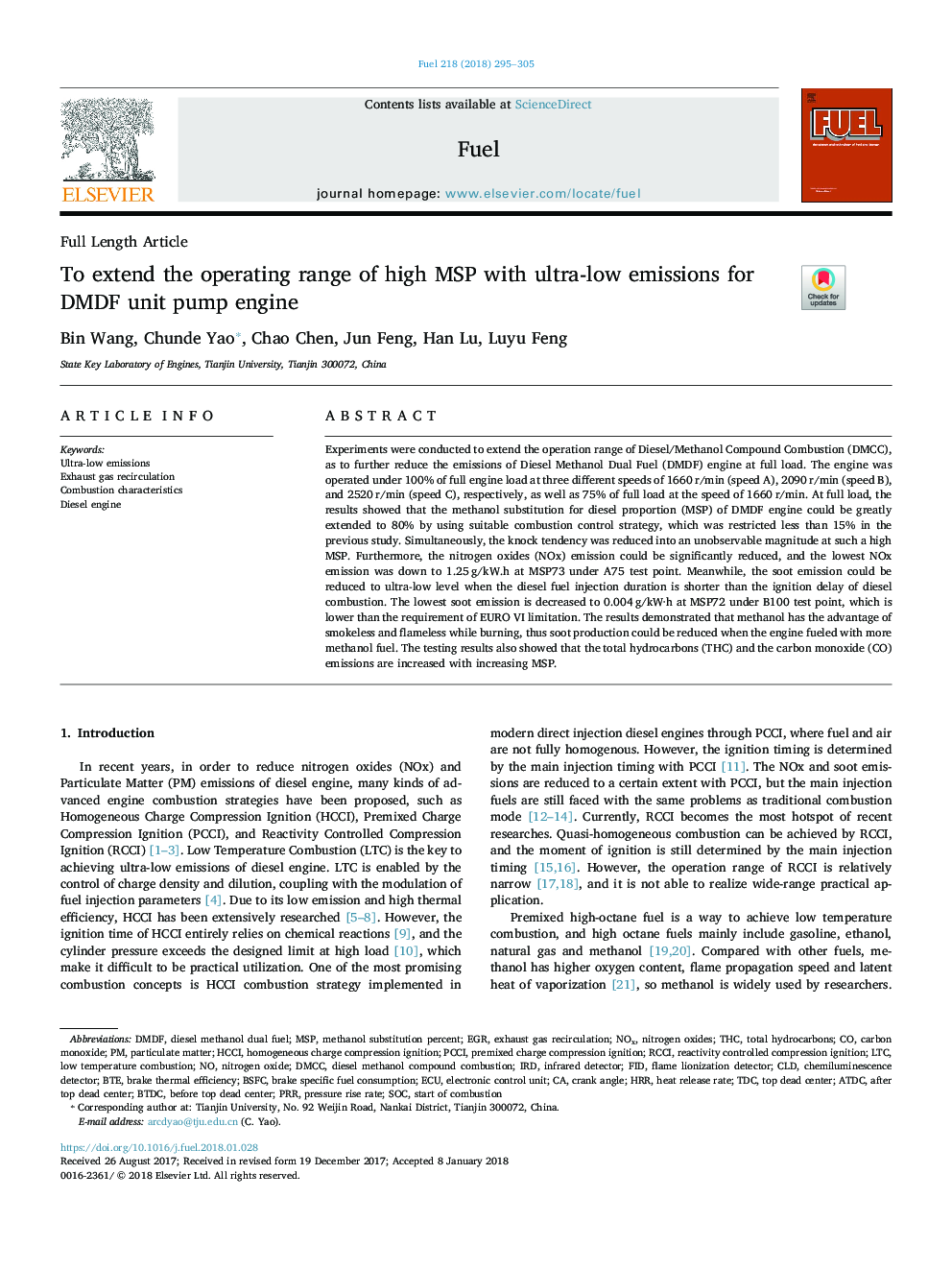| Article ID | Journal | Published Year | Pages | File Type |
|---|---|---|---|---|
| 6631934 | Fuel | 2018 | 11 Pages |
Abstract
Experiments were conducted to extend the operation range of Diesel/Methanol Compound Combustion (DMCC), as to further reduce the emissions of Diesel Methanol Dual Fuel (DMDF) engine at full load. The engine was operated under 100% of full engine load at three different speeds of 1660â¯r/min (speed A), 2090â¯r/min (speed B), and 2520â¯r/min (speed C), respectively, as well as 75% of full load at the speed of 1660â¯r/min. At full load, the results showed that the methanol substitution for diesel proportion (MSP) of DMDF engine could be greatly extended to 80% by using suitable combustion control strategy, which was restricted less than 15% in the previous study. Simultaneously, the knock tendency was reduced into an unobservable magnitude at such a high MSP. Furthermore, the nitrogen oxides (NOx) emission could be significantly reduced, and the lowest NOx emission was down to 1.25â¯g/kW.h at MSP73 under A75 test point. Meanwhile, the soot emission could be reduced to ultra-low level when the diesel fuel injection duration is shorter than the ignition delay of diesel combustion. The lowest soot emission is decreased to 0.004â¯g/kW·h at MSP72 under B100 test point, which is lower than the requirement of EURO VI limitation. The results demonstrated that methanol has the advantage of smokeless and flameless while burning, thus soot production could be reduced when the engine fueled with more methanol fuel. The testing results also showed that the total hydrocarbons (THC) and the carbon monoxide (CO) emissions are increased with increasing MSP.
Keywords
LTCdiesel methanol compound combustionmethanol substitution percentIRDMSPPRRHRRECUPCCICLDRCCIDMCCTHCDMDFHCCIEGRTDCaTDCBSFCbTDCNOxReactivity controlled compression ignitionChemiluminescence detectorInfrared detectorLow temperature combustionnitrogen oxideNitrogen oxidesafter top dead centerbrake specific fuel consumptionpremixed charge compression ignitionFIDdiesel methanol dual fuelparticulate matterBrake thermal efficiencyCrank AngleHomogeneous Charge Compression IgnitionSOCStart of combustionbefore top dead centertop dead centercarbon monoxideDiesel enginePressure rise rateHeat release rateelectronic control unitBTECombustion characteristicsTotal hydrocarbonsexhaust gas recirculation
Related Topics
Physical Sciences and Engineering
Chemical Engineering
Chemical Engineering (General)
Authors
Bin Wang, Chunde Yao, Chao Chen, Jun Feng, Han Lu, Luyu Feng,
